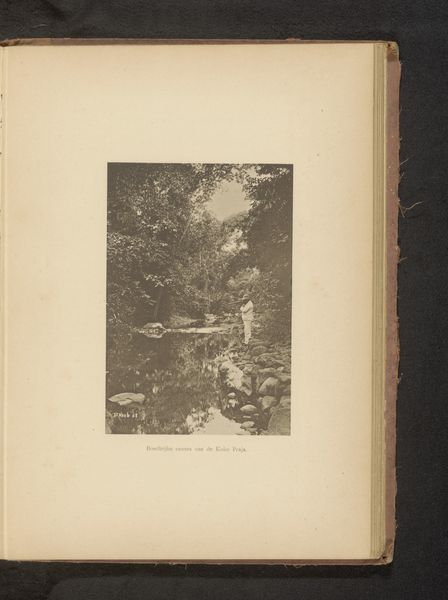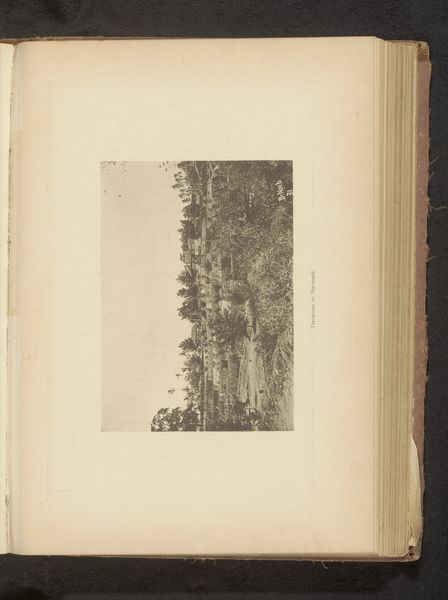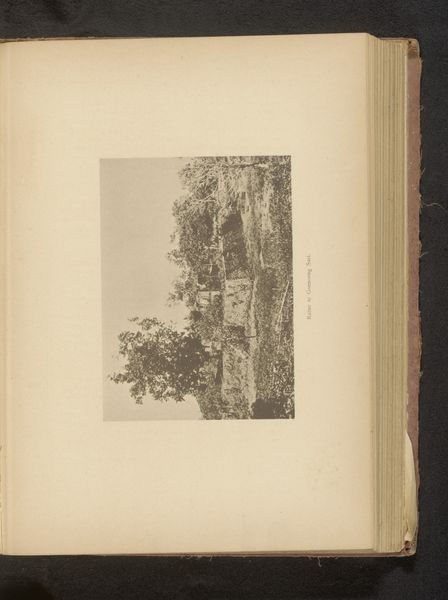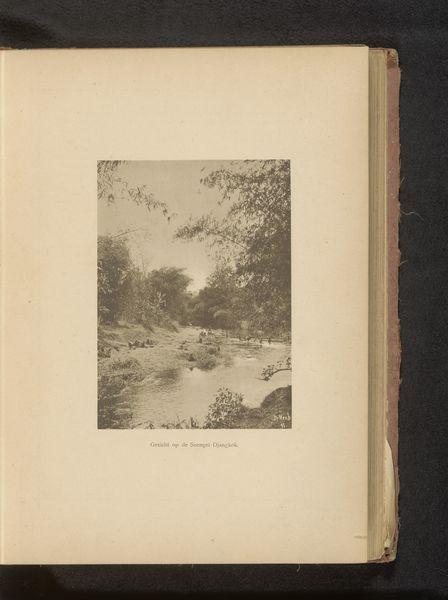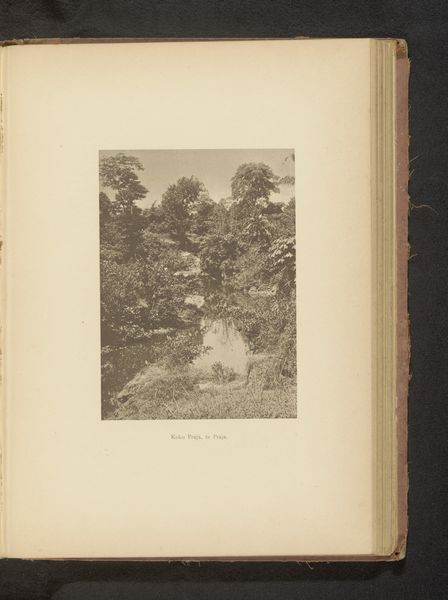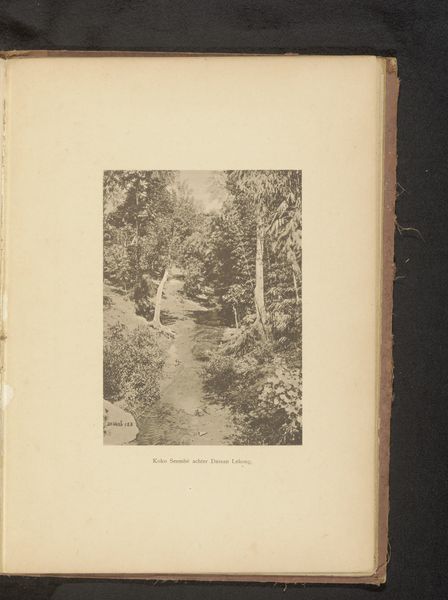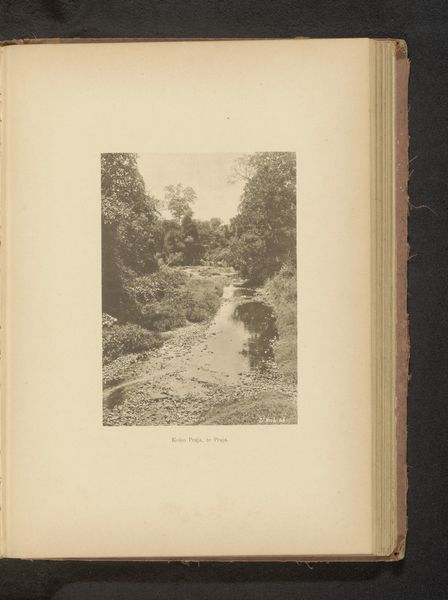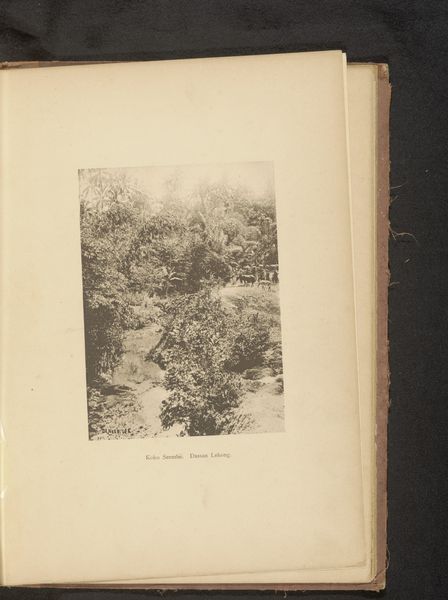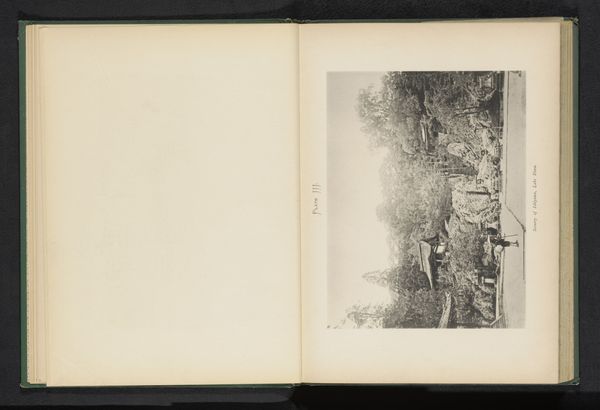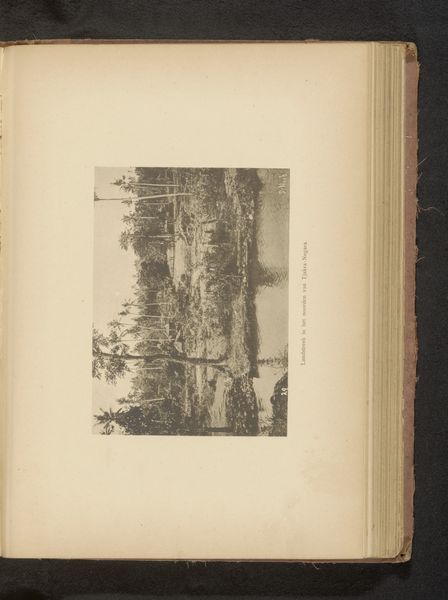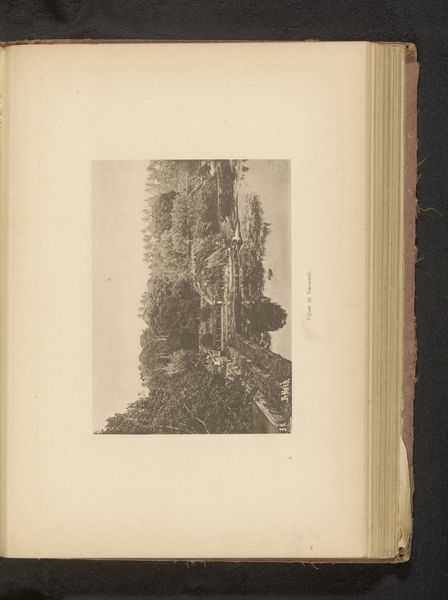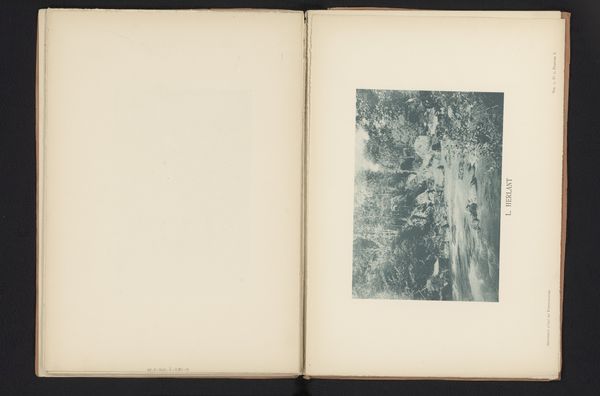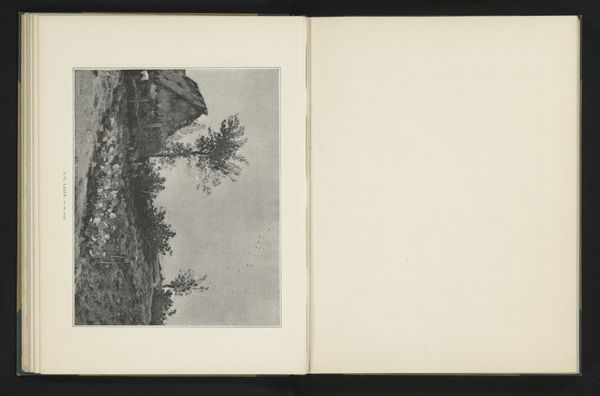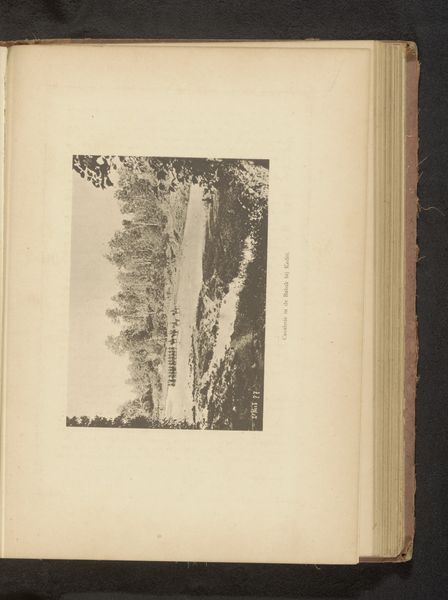
Dimensions: height 167 mm, width 120 mm
Copyright: Rijks Museum: Open Domain
Editor: We are looking at "Path Through the Woods" before 1897, by Christiaan Johan Neeb, in photography. I am really struck by how much light there is here, despite it being a woodland scene. How do you interpret this work? Curator: The immediate thing that strikes me is the structure itself. Neeb’s organization of light and shadow serves to guide the viewer's eye through a very carefully constructed space. Notice how the path isn't just a path. Editor: True, the light coming through the trees and reflecting off the path creates layers of interest and form. Are you saying it functions beyond just depicting the scene? Curator: Precisely! Look closely at the texture, the contrasting use of sharp versus blurred edges, and how they lead our eyes along this compositional pathway. The use of contrasting tones serves a greater structural purpose. The manipulation of depth gives an interesting flatness which emphasizes its construction rather than realistic qualities. What is your take on that interplay between depth and flatness here? Editor: I think the bright clearing interrupts a fully deep, realistic, perspectival rendering of a dense forest, pushing our focus toward the surface details within the central composition. I hadn't thought of that before! Thank you. Curator: It's this kind of meticulous arrangement of form and light that offers the work’s structure, the way it makes meaning beyond just what it depicts. It encourages us to question representation itself. Editor: So, seeing it less as a picture, and more as… a designed structure using light and shadow? This close-looking really changed my perception of the photograph today!
Comments
No comments
Be the first to comment and join the conversation on the ultimate creative platform.
